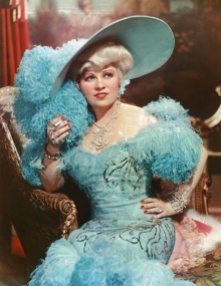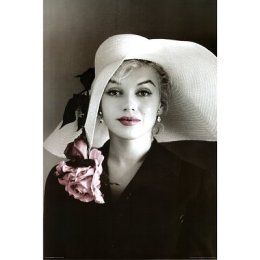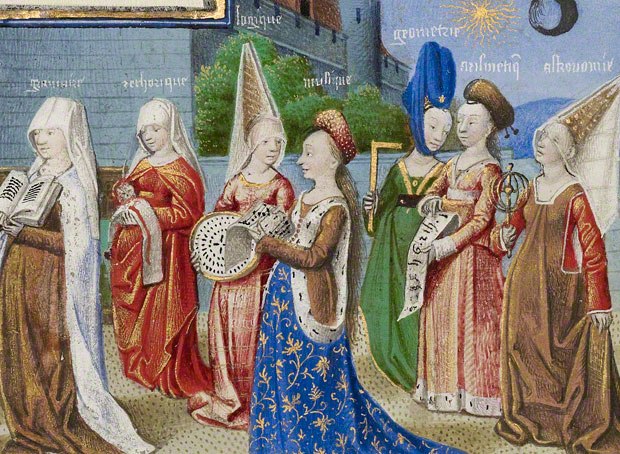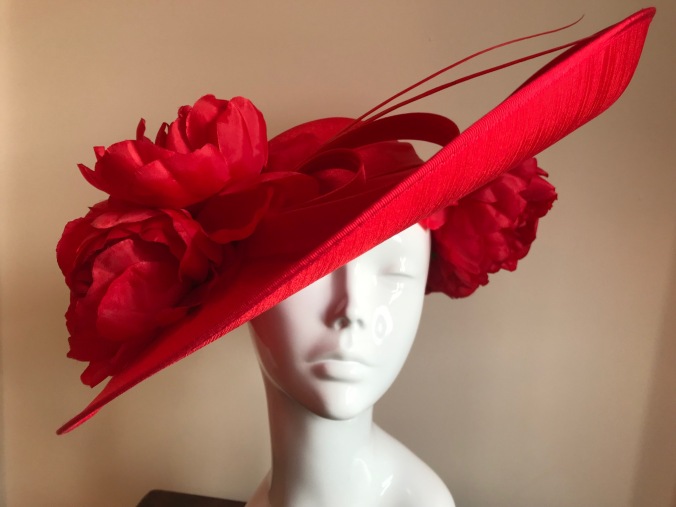On hearing that my latest venture included a foray into millinery, my lovely friend Galen Yeo (CEO of The Moving Visuals Company) sent me a link to one of my favourite scenes in any movie, Audrey Hepburn as Eliza Doolittle at the Ascot Races in My Fair Lady (https://youtu.be/8uozGujfdS0). In this clip she is of course wearing one of the most splendid hats ever seen on the silver screen. With all Miss Hepburns dazzling costumes and hats for the movie created by the inimicable Cecil Beaton, it is small wonder that this film continues to be mentioned at the top of any hataholics list as an all time favourite.
And of course Audrey herself was the perfect muse for all milliners, with her natural cool elegance and elfin features. Sporting an array of spectacular tiles, she and Jackie Kennedy Onassis were a tour de force, keeping the designer hat business afloat throughout the sixties.
But clearly the romance between screen sirens and movie millinery did not begin and end with La Hepburn. From the birth of the industry via silent movies in the twenties through to the introduction of the first ‘talkies’ in the thirties, movies stars like Norma Sheara, Alice Day and Mae West dazzled and smouldered in their picture hats, turbans and cloches.
As we moved into the forties the effects of wartime austerity on the fashion industry was reflected in the more modest millinery shown in the movies. Film stars like Lauren Bacall, Gene Tierney and Dorothy Lamour wore hats that were smaller and less flambouyant than their Hollywood predecessors, with the trilby and beret leading the fashion field on the runway.

As we’ve already seen, costume designers in the fifties and sixties were dying to break free from the shackles of austerity spawning a whole new era of outrageous millinery that only became slightly diluted by the dawn of the age of Aquarius in the form of the hippie movement. Among the starlets who lead the pack as milliner’s muses during the fifties and sixties were of course Marilyn Monroe, Brigitte Bardot, Sophia Lauren and Grace Kelly.
The seventies and eighties were not great eras for contemporary movie millinery but they did spawn a number of interesting television costume dramas like Upstairs Downstairs, Dallas and the Onedin Line where hats did occaisionally upstage the actors.
And finally we come to contemporary movies and their influence on hat designers like Philip Treacy and Pip Hackett. With films like The Red Hat, Titanic, The Duchess and The Great Gatsby plus television series like Downton Abbey movie millinery continues to thrill and inspire.
My own nod to the sirens of the silver screen are a Passion for Peonies, Invitation to the Abbey and Silver Screen Siren all of which are available to purchase or hire from my Etsy shop https://www.etsy.com/uk/shop/HatCoutureCreations




































 It turns out that this was in fact pretty close to the way in which these projectiles were orignally created using either wicker basketry or metal wire cage structures to generate height without increasing weight. I covered the chicken wire in linen soaked in size (natural animal based fabric stiffener), before dying some old cotton velvet curtains which I cut into strips before winding around the horns. I then covered the seams with lace crocheted from a gold spun thread and draped the finished hat with a silk scarf (which I also dyed pale eau de nil. My poor sister (which is where this conversation started) then kindly offered to model this beomoth for my portfolio, gamely balancing the whole contraption on her tiny frame. Unfortunately the original photo has long since been lost but here is a close approximation of the finished article.
It turns out that this was in fact pretty close to the way in which these projectiles were orignally created using either wicker basketry or metal wire cage structures to generate height without increasing weight. I covered the chicken wire in linen soaked in size (natural animal based fabric stiffener), before dying some old cotton velvet curtains which I cut into strips before winding around the horns. I then covered the seams with lace crocheted from a gold spun thread and draped the finished hat with a silk scarf (which I also dyed pale eau de nil. My poor sister (which is where this conversation started) then kindly offered to model this beomoth for my portfolio, gamely balancing the whole contraption on her tiny frame. Unfortunately the original photo has long since been lost but here is a close approximation of the finished article.



 Similarly some of the Middle Eastern airlines incorporate a wimple concept into their uniforms. Maybe I will try some experiments blending my collection of vintage designer silk scares from Hermes, Gucci and Versace with the humble pill box. Could produce some interesting results.
Similarly some of the Middle Eastern airlines incorporate a wimple concept into their uniforms. Maybe I will try some experiments blending my collection of vintage designer silk scares from Hermes, Gucci and Versace with the humble pill box. Could produce some interesting results. Here you can find the creations that are a result of my scouring of charity shops for designer millinery that deserves to be upcycled. After going through the process of a complete refurbishment (and in some cases a bit more than minor cosmetic surgery), my ‘enfants de la mode’ are ready to debut once again on the runway as ‘Millinery Reimagined’. Not only do I therefore feel good about rescuing these little gems from the textile recycling bin (whilst making what in some cases is a sizeable donation to charity to cover their purchase) but I also intend to donate 10% of the proceeds from all sales on my site to charities that support women and children at risk.
Here you can find the creations that are a result of my scouring of charity shops for designer millinery that deserves to be upcycled. After going through the process of a complete refurbishment (and in some cases a bit more than minor cosmetic surgery), my ‘enfants de la mode’ are ready to debut once again on the runway as ‘Millinery Reimagined’. Not only do I therefore feel good about rescuing these little gems from the textile recycling bin (whilst making what in some cases is a sizeable donation to charity to cover their purchase) but I also intend to donate 10% of the proceeds from all sales on my site to charities that support women and children at risk.



 An evolution of the “Ghirlanda” in a beautiful portrait of Saint Cecilia in the mannerist style by Domenichino (1581-1641) . The Ghirlanda was a kind of headdress decorated with silk, trims (here in gold threads), pearls.
An evolution of the “Ghirlanda” in a beautiful portrait of Saint Cecilia in the mannerist style by Domenichino (1581-1641) . The Ghirlanda was a kind of headdress decorated with silk, trims (here in gold threads), pearls.